Artwork at every stop along the MAX Yellow Line draws from the history and culture of the area to create a unique identity for each station.
With over 40 local artists contributing artwork and 75 community members participating in forums and committees, the art along MAX Yellow Line is a proud reflection of a historically rich and vital part of Portland.
We boarded a train around 10 a.m. for our two-hour tour. I couldn't get every shot I wanted due to being inside a moving train car, so I missed art at some stations completely, and at other stations, I only got tidbits. To have done a better job, I would have had to get off at every stop, walk around, look, take photos, wait for the next train. Since I had an appointment for a haircut and perm, and since I was part of an organized tour, I was a good girl and stayed with our tour guide Valerie Otani's plan. I am very glad that I did, but one of these days I want to go back and take a more in-depth look.
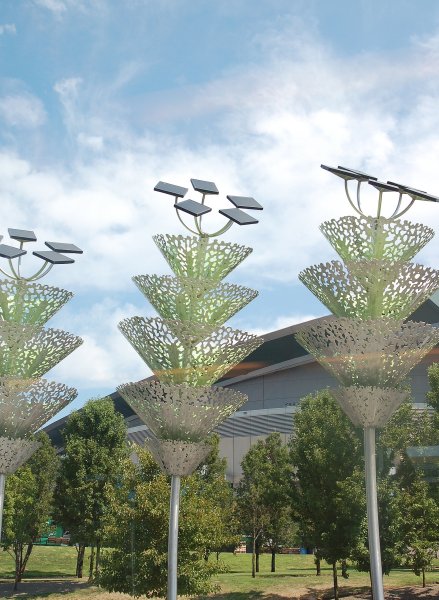
Interstate/Rose Quarter Station: Brian Borrello presents a three-part metaphor for displacement and change. Illuminated metal trees generate their own electricity from solar panels.
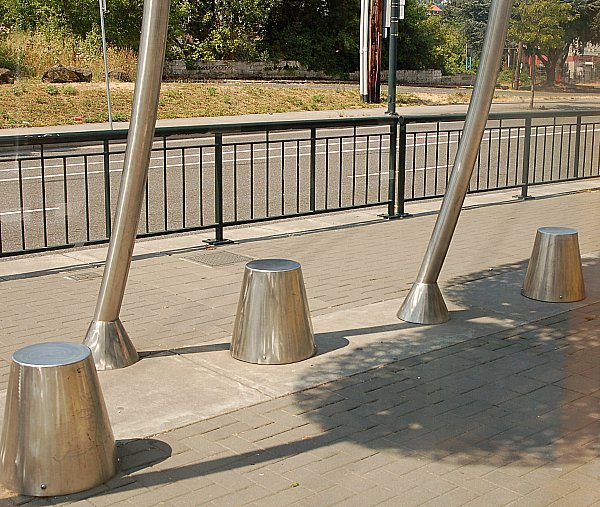
A virtual campfire flickers with light at night, surrounded by stainless steel stump seats.
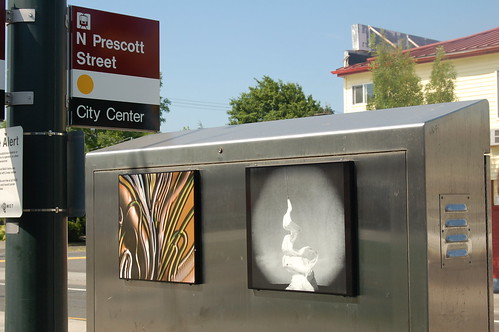
N. Prescott St. Station: Works by Wid Chambers and Heidi Kirkpatrick are reproduced in porcelain enamel on steel. (I don't know which is which. Valerie explained that the idea was to open the public art up to more than sculptors with these works on TriMet's boxes that contain something important to the trains, can't remember what exactly.)
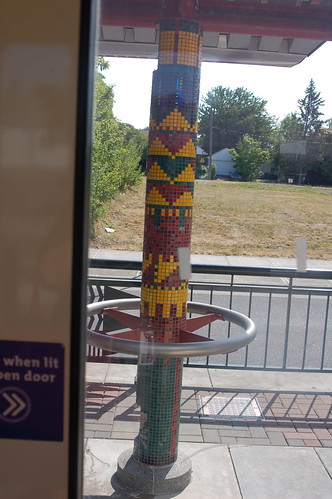
N. Killingsworth Station: Adriene Cruz and Valerie Otani celebrate the vibrant multiculturalism of the Killingsworth community. Glass mosaic on columns recalls the colorful patterns of African Kente cloth.
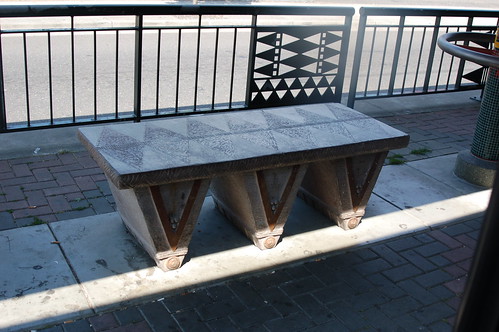
Guardrail panels were inspired by South American textiles. Cast-concrete benches evoke the carved wooden stools of Africa.
The MAX Yellow Line is a 5.8-mile (9.3 km) (not including segments downtown shared with other lines) route in the Metropolitan Area Express light rail system in Portland, Oregon. The route, which opened May 1, 2004,[1] runs between downtown Portland and the Portland Expo Center. It is also known as the Interstate MAX because the majority of the line runs along Interstate Avenue in North Portland.
The Yellow Line is the newest MAX line currently in full operation. Originally, it was conceived as part of a north-south light rail project between Vancouver, Washington, and Milwaukie to be built using city funds, but that plan was rejected by voters. TriMet then learned that a majority of the residents of North Portland had voted in favor of the original plan, so they decided to build this new line without using city funds. To do this, they convinced the City of Portland to create an urban renewal district along the proposed line, which made them eligible for matching federal funds with which they could finance the construction of the MAX line. The project was finished four months ahead of schedule at a budget of $320 million, $25 million under budget.[1] The presence of the line has also caused a great deal of redevelopment along its corridor.
The Yellow Line will move to the Portland Transit Mall on August 30, 2009.[2] Additionally, there are plans for extensions at both ends, from downtown Portland southward to Milwaukie as part of the so-called MAX Orange Line (which will likely be a Yellow Line extension), and from the Expo Center into Vancouver, Washington, via Interstate 5 and SR-500.
No comments:
Post a Comment